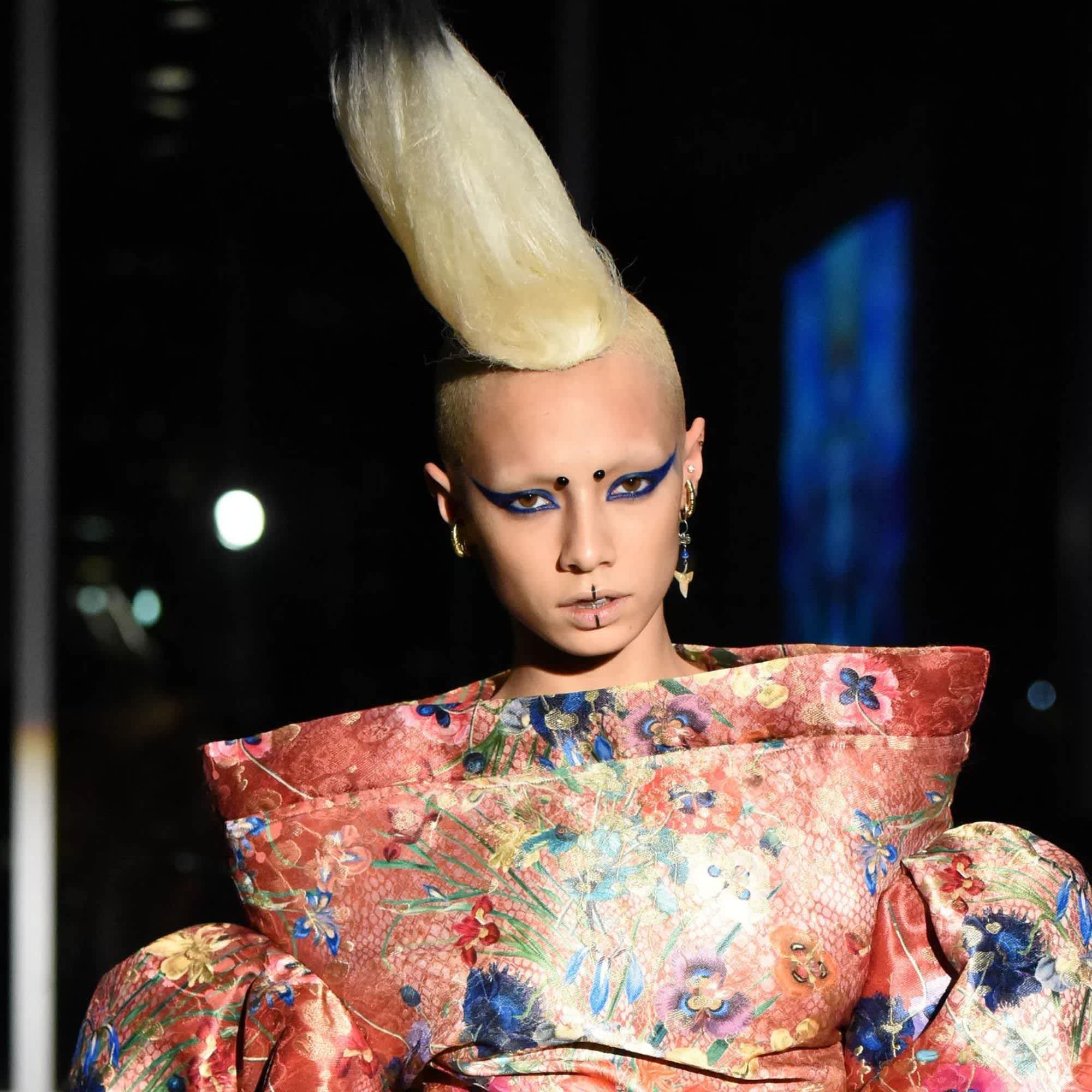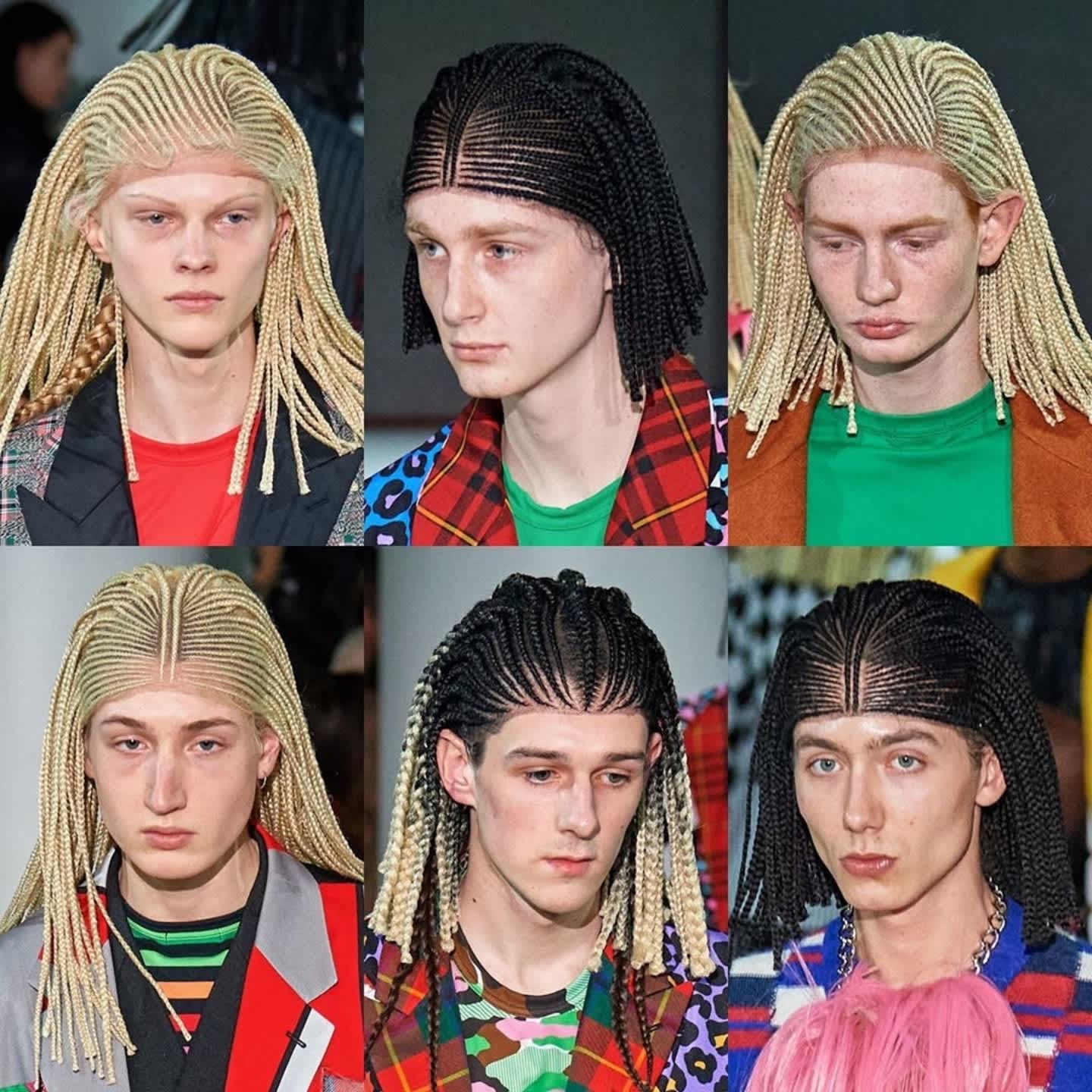
- POPSUGAR Australia
- Beauty
- Is the Mohawk Hairstyle Cultural Appropriation? It's Complicated
Is the Mohawk Hairstyle Cultural Appropriation? It's Complicated

Image Source: Getty
It’s been long questioned whether the Mohawk (or “fauxhawk”) – a hairstyle where the majority of hair runs down the centre of the head from front to back, which skyrocketed in popularity in the early 1970s and has been seen in countless Fashion Week runway shows since – appropriates a traditional Native American hairstyle. This isn’t issue-specific to just the Mohawk, of course: when any group of people outside of the original creators use something from a specific culture without acknowledging its origins, things can begin to teeter on cultural appropriation. However, unlike some other black-and-white examples of people stealing symbols and traditions from other cultures (like braided hairstyles for Black women or Día de los Muertos makeup for Halloween), the topic of the Mohawk hairstyle is a bit more complicated.
Blame it on the less-than-perfect education on Native American history offered in school curriculums or just a general naiveté, but many people don’t know the true origin of the Mohawk hairstyle. It’s been taught that the Mohawk hairstyle originated from the Mohawk tribe, but this isn’t entirely true – it’s instead the white-washed version. “The Mohawk you see today is not exactly a Mohawk that would be historically accurate,” Michael Witgen, PhD, a professor in the Department of history and the Center for the Study of Ethnicity and Race at Columbia University, tells POPSUGAR.
History has been told incorrectly in a couple of ways. For one, it was actually the Pawnee tribe out of present-day Nebraska who traditionally wore a Mohawk-type hairstyle: not the Mohawk tribe of present-day New York. Despite the men in the Mohawk tribe being credited as the sole wearers of the look, they actually wore their hair a little differently.
“They have almost what you’d call a scalp lock,” says Professor Witgen. They would remove all of their hair except for a section on the crown of the head at the very back and “they wouldn’t shave the rest of their head, they would pluck it.” It’s reported that they would also braid and decorate this hair tuft, but it didn’t extend from the front of the head to the back like the hairstyle we know today.
“The Mohawk is really more of a creation of white people who were “playing” Native Americans.”
They also didn’t call it a Mohawk. “That was the name that got placed on them from outsiders,” he says. In historical documents, English speakers often referred to it as “top knot,” but it was Hollywood that branded the hairstyle with the name we know today. “The Mohawk that you’re thinking about is really more of a creation of white people who were ‘playing’ Native Americans.”
It showed up in Hollywood for the first time in the 1939 film “Drums, Along the Mohawk,” and in the popular 1985 movie “Vision Quest,” as well as countless other western films in between. In those movies, this front-to-back spiky Mohawk hairstyle was worn by actors playing members of the Mohawk tribe, furthering this spread of misinformation. We also see it with the people who do the Boston Tea Party reenactments.
The novel “Playing Indian” by Philip J. Deloria, a current professor of history at Harvard University, explores this very history of white Americans inaccurately appropriating different elements of Native American culture, and in turn, shaping national identity. “There’s a huge tradition in American pop culture starting from the time period of the Revolution where people ‘play’ Native American,” says Professor Witgen. “They want to be subversive.”
This idea that it’s anti-establishment is what also helped the hairstyle get picked up in the ’70s by the punk rock moment. “It became known as rebellious and then went on to become attached to the punk movement,” says Nikki Apostolou, a Native American digital creator. “This style then went on to inspire the hair in ‘Taxi Driver’ in 1976.” She points out that this was two years before the American Indian Religious Freedom Act of 1978 was passed, which allowed Natives to legally practice their own religion and culture.
With all of this in mind, it’s a bit easier to understand the complexities of whether or not wearing a Mohawk or fauxhawk in today’s society is cultural appropriation. “Wearing the Mohawk/fauxhawk hairstyle, in and of itself, isn’t completely appropriation, especially since Natives themselves have shared this style among many tribes,” says Apostolou. “What would make it cultural appropriation is the attitude when wearing it. For example, if it was part of a costume, or being used to mock native individuals,” which is exactly how the white-washed version of the hairstyle came about.
Apostolou believes educating yourself on the tumultuous origins of the modern hairstyle can go a long way. “Many people wear the Mohawk style and attribute it to punk culture of the ’70s and ’80s because of its extreme look,” she says. “Simply acknowledging the origin, attributing it to Native people would be beneficial. . . the same way we can acknowledge and respect that other hairstyles come from a specific group.”


